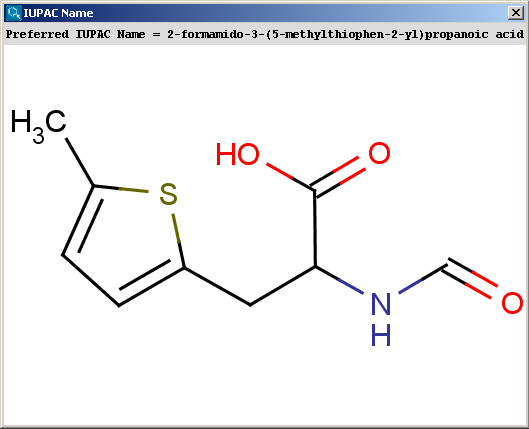
Iupac Naming Chemdoodle Free Trial Available
The IUPAC nomenclature system is a set of logical rules devised and used by organic chemists to circumvent problems caused by arbitrary nomenclature. Licenses are as little as $15, and we have a free trial available at: ISBN 0-967. This update is free for all ChemDoodle subscriptions, Lifetime and Site licenses. Before starting the IUPAC rules, lets see an example of organic compound and it’s IUPAC name.We are pleased to introduce version 11 of our ChemDoodle 2D software. Each part of the IUPAC name gives you some useful information about the compound. •This is a method of naming the organic compounds as recommended by the international Union of Pure and Applied Chemistry (IUPAC).
MarvinSketch / ChemExonBefore we discuss some of the new features, we just want to say thank you to all of our users and supporters over this past year. Chemdoodle has many featureS like 2D graphics, drawing, cheminformatics, IUPAC naming, reaction, Spectroscopy, vector art, and publishing. It is paid software with other many assistant software. Help to make a smooth process either is generate good graphics, modern tools, reactions, calculators, compatibility with 3d models, cheap in a process and customizable by users requirements.Chemdoodle is the most intelligent software regarding chemistry drawing. Flexible run on mobile gadgets and web browsers. ChemDoodle is an Online drawing tools for chemical industries.
On the surface, these calculations are really easy to compute, albeit tedious, so a program to perform them is essential if you value your time. Now, let us discuss some of the new features in ChemDoodle 2D v11.Stoichiometry tables: Stoichiometry tables have been the most requested feature for ChemDoodle 2D since IUPAC naming. Our growing userbase continues to show us our work is making the lives of those working in chemistry easier. Our goal, as always, is to produce the highest quality chemistry software at the lowest price possible. With our new subscription model, we have been able to provide new features for our software faster than ever before.
ChemDoodle 2D enforces the credibility of the calculations for the entire table, and will even warn you if your input is suspicious, for instance, if you have a percent yield greater than 100% or your excess mass is a negative value. Input reactions are automatically balanced (however you can override these stoichiometric ratios with the Equivalents row) and the limiting component is automatically inferred based on the input values. ChemDoodle 2D's stoichiometry tables are self-calculating and based on the table shape objects introduced in version 10.2. And our stoichiometry table is the only implementation in the industry that is fully chemically aware: it automatically balances chemical equations and infers limiting components so you do the least amount of work and obtain all the information you desire.For those that are not familiar with such features, a stoichiometry table is a form where you input theoretical and experimental values from your experiment and you will get accurate calculations for your input and results. If you only care about theoretical values, our table separates experimental from theoretical inputs. So, if you desire a specific amount of product or want to limit the amount of a reactant, our stoichiometry table will help you determine the remaining quantities.
You can also copy/paste these pushers in ChemDoodle JSON format. Going futher, you can convert these pushing arrows into customizable bezier shapes, to fully control the graphics. You can draw single electron, electron pair and bond forming pushing arrows automatically by setting a starting and ending atom or bond.
You can now recover your chemical data from Word documents you created on Windows if you switch to Linux, and you can now edit chemical figures from a Word document on macOS with ChemDoodle from a colleague who uses ChemDraw on Windows.This is currently an experimental feature, and we want to continue to improve it. ChemDoodle 2D now provides a very unique solution for this problem, and can search and extract chemical data embedded in Microsoft Office files, regardless of the program they were created in, including ChemDoodle, ChemDraw, ChemSketch and Biovia Draw, and regardless of the operating system. In all of these cases, the chemistry data in these files cannot be used. Several times, Microsoft has removed the round-trip editing functionality in Office products. ChemDoodle 2D has provided round-trip editing functionality on Windows, macOS and Linux since its inception and starting with version 10.4, users can paste chemical data from embedded ChemDraw images on macOS in ChemDoodle 2D.However, there are several issues when relying on round-trip editing, as the user may not have continued access to the originating chemistry program or Microsoft Office, or may be working with an individual on a different operating system. Chemists use this all the time when creating chemistry documents in Microsoft Word.



 0 kommentar(er)
0 kommentar(er)
